If you’re visiting Madagascar, you should do your best to organise a visit to a famadihana or bone-turning ceremony (only in the highlands between June and September) – an unforgettable experience. Merina tombs can be seen easily between Tana and Antsirabe, but the most intriguing and interesting tombs are those of the Mahafaly in the Toliara region.
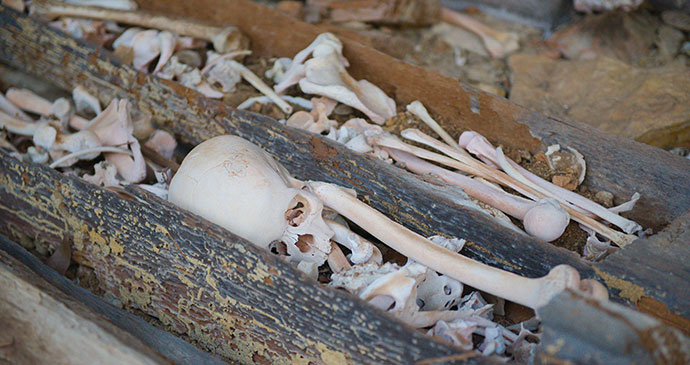
These bones at a tomb in western Madagascar are said to belong to Vazimba tribesmen © Hilary Bradt
The famadihana
The core spiritual belief of the Malagasy is in the power of their ancestors. Recently passed-on generations are considered to exercise influence over all aspects of the lives of the living, so burial, exhumation and second burial are an important focus.
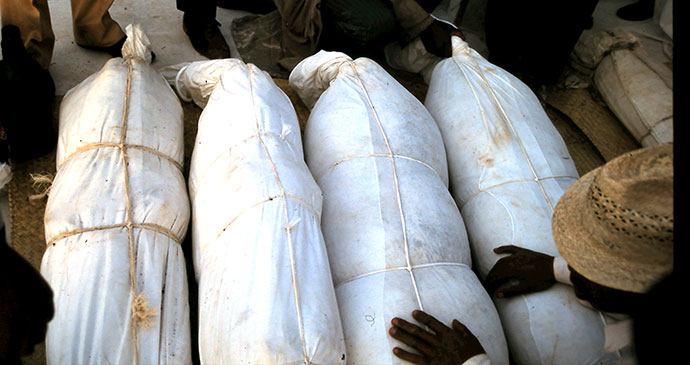
During a famadihana (bone-turning) ceremony, the bodies of the ancestors are removed from the tomb and wrapped in fresh shrouds © Hilary Bradt
The reburial ceremony practiced by the Merina and Betsileo is known as the turning of the bones, or famadihana. This is a joyful occasion which occurs about every seven years after first burial, and provides the opportunity to communicate with and remember a loved one. The remains of the selected relative are taken from the tomb, rewrapped in a new burial shroud and carried around the tomb a few times (or even through the village) before being replaced.
Meanwhile the corpse is informed of all the latest events. Generous quantities of alcohol are consumed amid a festive atmosphere with much dancing and music. By law a famadihana may take place only in the dry season (June– September). It can last up to a week and involves considerable expense, as befits the most important celebration for any family. Variations of the ceremony are practised by several other tribes.
Tomb architecture
The style of tombs defines the different tribes better than any other visible feature, and also indicates the wealth and status of the family concerned.
Antandroy and Mahafaly
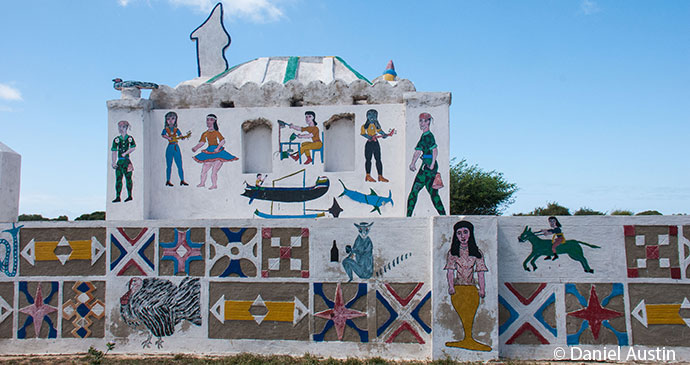
Mahafaly tombs are typically decorated with elaborate paintings of scenes from the life of the deceased © Daniel Austin
The local name of these tombs is fanesy which means ‘your eternal place’. Zebu horns are scattered on the tomb as a symbol of wealth (on Sakalava tombs, zebu horns are only a decoration, not an indication of status). The Antandroy and Mahafaly tombs have much the same architecture as those of the Sakalava, but are more artistically decorated. The Mahafaly aloalo bear figures depicting scenes from the person’s life, and the entire length is often carved with intricate designs.
Merina
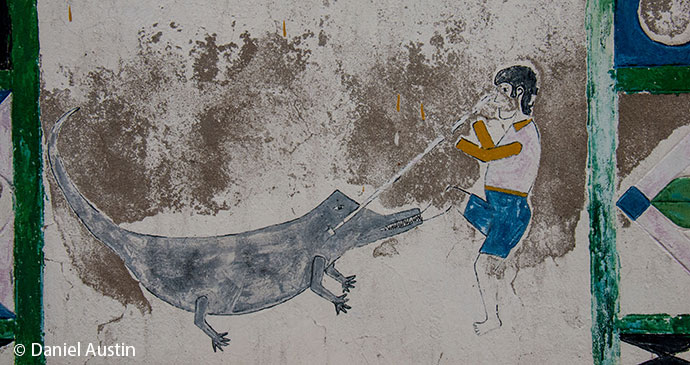
Whether or not it was the cause of his demise is not clear but it appears that the occupant of this tomb had a run-in with a crocodile © Daniel Austin
In early times burial sites were near valleys or in marshes. The body would be placed in a hollowed-out tree trunk and sunk into the mud at the bottom of a marsh. These fasam-bazimba marshes were sacred. Later the Merina began constructing rectangular wooden tombs, mostly under the ground but with a visible structure above. In the 19th century Frenchman Jean Laborde had a profound effect on tomb architecture: tombs were built with bricks and stone. It was his infl uence which led to the elaborate structure of modern tombs, which are often painted with geometric designs. Sometimes the interior is lavishly decorated.
Sakalava
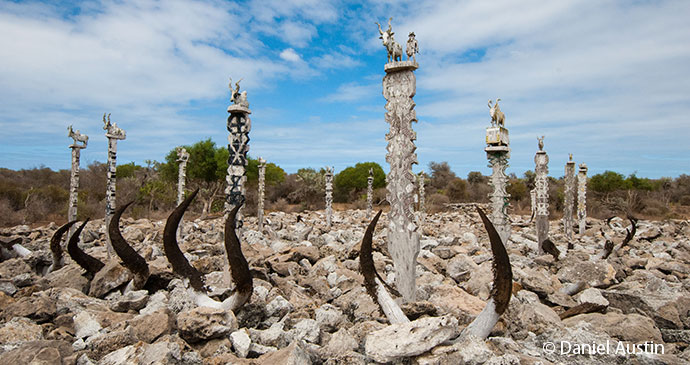
Zebu horns and sculpted funerary poles known as aloalo adorn the tombs of southern Madagascar © Daniel Austin
During the Vazimba period, the Sakalava tombs were simple piles of stones. With the introduction of cement, a step design was added. At a later stage, wooden stelae, aloalo, were placed on the tombs facing east. These were topped with carvings, often of a most erotic nature. Since Sakalava tombs are for individuals and not families, there is no attempt at maintaining the stelae as it is believed that only when the wood decays will the soul of the buried person be released. Tomb construction commences only after the person’s death and can take up to six weeks, the body meanwhile being kept in a house. While a tomb is under construction, many zebu are sacrificed to the ancestors. The Sakalava call their tombs izarana, ‘the place where we are separated’.
For more on Madagascar’s customs and beliefs, check out our comprehensive guide:
